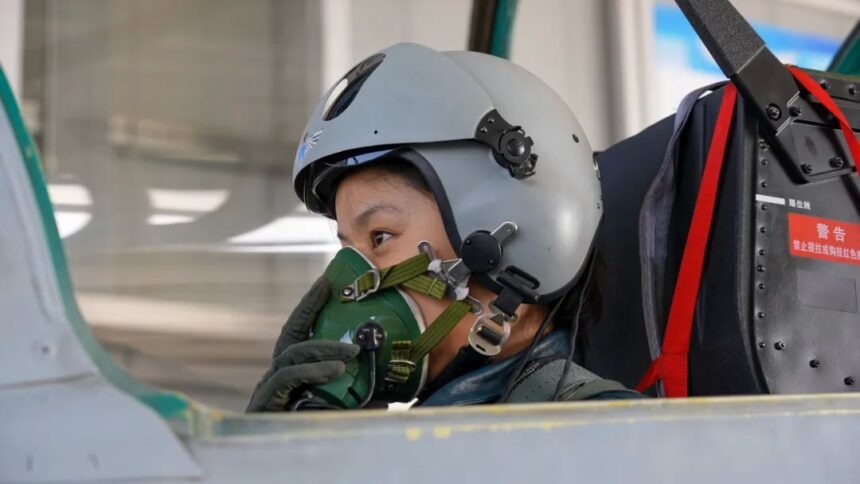A large number of women in China are breaking the glass ceiling to enter professions that were previously dominated by men. The first female pilot recruited by the People’s Liberation Army (PLA) Air Force in China’s Xizang (Tibet) Autonomous Region has attracted wide attention.
Over the years, Tibetan women have driven battle tanks, maneuvered warships and served in missile units of the People’s Liberation Army. Now, 23-year-old Kelsang Pedron has become the first Tibetan woman to fly a fighter jet for China.
Born in May 2000 in Lhokha city in the Xizang autonomous region, Kelsang Pedron place at the Air Force Aviation University to learn how to fly military aircraft. In August 2019, she became the first-ever Tibetan woman to start learning combat aircraft operation.
In recent years, a large number of women have played important roles in manufacturing, service, high-tech, and green industries, etc. They not only promote economic development in traditional fields but are also doing “male jobs”, with the number of female pilots, academicians, entrepreneurs, and diplomats on the rise.
Kelsang Pedron, a woman of the post-2000 generation, i.e., youths born from 2000 to 2009 in China, is the first female pilot from Xizang (Tibet) Autonomous Region recruited by the PLA Air Force. She has had a dream of “flying into the blue sky” since childhood.
In Kelsang Pedron’s eyes, gender is no longer an obstacle on the road for women to pursue dreams. She went through the same rigorous selection and training as her male classmates before becoming a qualified fighter pilot.
“I had undergone an entire selection process and procedures to get this far, and I was determined to excel and not to be eliminated, so I studied very hard,” she said.
Kelsang Pedron has successfully completed a single test flight for a fighter aircraft, delivering excellent results in this stage of training. She said that flying has become a goal from merely a passion at the very beginning.
“I should train hard to become a fighter pilot to protect the blue skies of our motherland,” said Kelsang Pedron.
At present, there are more and more female college graduates like Kelsang Pedron. For their diverse employment needs, the Chinese government has also put forward many support measures.
According to data from the National Bureau of Statistics (NBS) of China, the labor force participation rate of Chinese women has risen from 7.5 percent in 1949 to 61.1 percent in 2023.
In September 2024, the Communist Party of China Central Committee and the State Council unveiled a set of guidelines to promote high-quality and sufficient employment by implementing the employment-first strategy.
It proposes to safeguard the legitimate rights and interests of women in employment and entrepreneurship, career development, skills training, occupational health, and safety, etc., and build a birth friendly employment environment.
Source: China News Service
Related News:
China Cracks Down on Golden Triangle Crime Syndicates

Geoff Thomas is an award winning journalist known for his sharp insights and no-nonsense reporting style. Over the years he has worked for Reuters and the Canadian Press covering everything from political scandals to human interest stories. He brings a clear and direct approach to his work.














